#Custom VR Application Developers
Explore tagged Tumblr posts
Text
Choosing a virtual reality (VR) development company involves several key considerations to ensure you find the right partner for your project. Here are steps to guide your selection process:
Define Your Project Requirements:
Determine your goals and objectives for the VR project.
Identify the target audience and the platforms (like Oculus, HTC Vive, etc.) you want to develop for
#VR Development Company#Best VR Development Agencies#Custom VR Solutions#Top VR Development Firms#VR Game Development#VR Simulation Development#Virtual Reality App Developers#VR Technology Providers#AR/VR Development Company#Immersive VR Experiences#VR Content Creation Companies#Affordable VR Development#VR Training Solutions#VR Platform Development#Custom VR Application Developers#Virtual Reality Development Expertise#VR Development for Enterprises#VR/AR Development Services#VR Project Development Agency#VR Game Development Studio
0 notes
Text
#ar vr app development#blockchain app development#cloud application development#custom software development company#app development company#mobile app developer#best app development software#healthcare app developers#software development company#iot developers#largest app developers#internet of things app development#app building agency
0 notes
Text
HS Digital Media Crafting Compelling Narratives through Ad Films
The Power of Ad Films
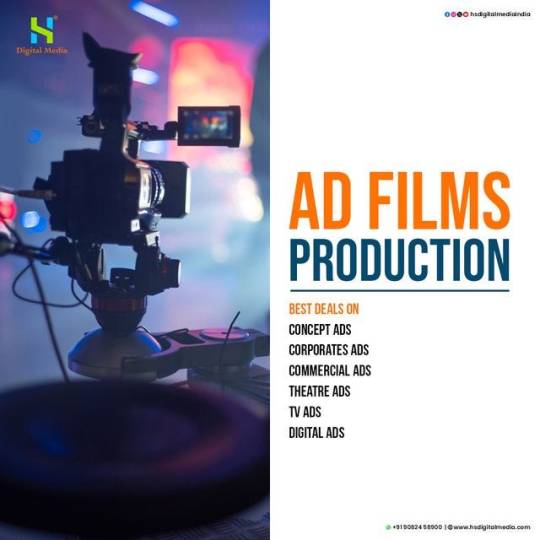
Why Choose HS Digital Media
Showcase your company’s unique selling characteristics. Highlight any awards, recognition, or successful case studies.
The Creative Process
Provide insights into how HS Digital Media approaches ad film creation. Discuss the collaboration between your team and clients. Emphasize the importance of tailoring each project to the client’s brand and goals.
Technological Edge
Detail the cutting-edge technology and equipment used by HS Digital Media. Discuss any innovative techniques or trends in the ad film industry.
The Team Behind the Magic
Introduce key members of your team and their expertise. Share any success stories or challenges overcome during previous projects.
Client Success Stories
Include testimonials from satisfied clients. Highlight specific projects and their impact on the client’s brand.
Industry Trends and Insights
Discuss current trends in ad film production. Share insights into the evolving landscape of digital media.
Challenges and Solutions
Address common challenges in ad film production. Showcase how HS Digital Media overcomes these challenges to deliver exceptional results.
Social Impact Through Ad Films
Discuss any projects that have contributed to social causes. Highlight the potential for ad films to create positive change.
The Future of Ad Films
Share your vision for the future of ad film production. Discuss emerging technologies and their potential impact on the industry.
#Mobile App Development#App Development Services#iOS App Development#Android App Development#Custom Mobile App#Mobile Application Design#Cross-Platform App Development Native App Development Mobile App Developers#Mobile App UI/UX#Mobile App Testing#Enterprise App Development#Mobile App Prototyping#App Maintenance Services#Mobile App Security#Cloud-Based App Development#Mobile App Integration#Wearable App Development#AR/VR App Development#IoT App Development#Mobile App Development Mumbai#Mumbai App Developers#iOS App Development Mumbai#Android App Development Mumbai#Mobile App Design Mumbai#Mumbai Mobile App Agency#Mumbai App Development Services#Custom App Development Mumbai#Mumbai Mobile App Solutions#Native App Development Mumbai#Cross-Platform App Mumbai#Mobile App Testing Mumbai
0 notes
Text
Top 10 Emerging Tech Trends to Watch in 2025
Technology is evolving at an unprecedented tempo, shaping industries, economies, and day by day lifestyles. As we method 2025, several contemporary technology are set to redefine how we engage with the sector. From synthetic intelligence to quantum computing, here are the important thing emerging tech developments to look at in 2025.

Top 10 Emerging Tech Trends In 2025
1. Artificial Intelligence (AI) Evolution
AI remains a dominant force in technological advancement. By 2025, we will see AI turning into greater sophisticated and deeply incorporated into corporations and personal programs. Key tendencies include:
Generative AI: AI fashions like ChatGPT and DALL·E will strengthen similarly, generating more human-like textual content, images, and even films.
AI-Powered Automation: Companies will more and more depend upon AI-pushed automation for customer support, content material advent, and even software development.
Explainable AI (XAI):��Transparency in AI decision-making becomes a priority, ensuring AI is greater trustworthy and comprehensible.
AI in Healthcare: From diagnosing sicknesses to robot surgeries, AI will revolutionize healthcare, reducing errors and improving affected person results.
2. Quantum Computing Breakthroughs
Quantum computing is transitioning from theoretical studies to real-global packages. In 2025, we will expect:
More powerful quantum processors: Companies like Google, IBM, and startups like IonQ are making full-size strides in quantum hardware.
Quantum AI: Combining quantum computing with AI will enhance machine studying fashions, making them exponentially quicker.
Commercial Quantum Applications: Industries like logistics, prescribed drugs, and cryptography will begin leveraging quantum computing for fixing complex troubles that traditional computer systems can not manage successfully.
3. The Rise of Web3 and Decentralization
The evolution of the net continues with Web3, emphasizing decentralization, blockchain, and user possession. Key factors consist of:
Decentralized Finance (DeFi): More economic services will shift to decentralized platforms, putting off intermediaries.
Non-Fungible Tokens (NFTs) Beyond Art: NFTs will find utility in actual estate, gaming, and highbrow belongings.
Decentralized Autonomous Organizations (DAOs): These blockchain-powered organizations will revolutionize governance systems, making choice-making more obvious and democratic.
Metaverse Integration: Web3 will further integrate with the metaverse, allowing secure and decentralized digital environments.
4. Extended Reality (XR) and the Metaverse
Virtual Reality (VR), Augmented Reality (AR), and Mixed Reality (MR) will retain to improve, making the metaverse extra immersive. Key tendencies consist of:
Lighter, More Affordable AR/VR Devices: Companies like Apple, Meta, and Microsoft are working on more accessible and cushty wearable generation.
Enterprise Use Cases: Businesses will use AR/VR for far flung paintings, education, and collaboration, lowering the want for physical office spaces.
Metaverse Economy Growth: Digital belongings, digital real estate, and immersive studies will gain traction, driven via blockchain technology.
AI-Generated Virtual Worlds: AI will play a role in developing dynamic, interactive, and ever-evolving virtual landscapes.
5. Sustainable and Green Technology
With growing concerns over weather alternate, generation will play a vital function in sustainability. Some key innovations include:
Carbon Capture and Storage (CCS): New techniques will emerge to seize and keep carbon emissions efficaciously.
Smart Grids and Renewable Energy Integration: AI-powered clever grids will optimize power distribution and consumption.
Electric Vehicle (EV) Advancements: Battery generation upgrades will cause longer-lasting, faster-charging EVs.
Biodegradable Electronics: The upward thrust of green digital additives will assist lessen e-waste.
6. Biotechnology and Personalized Medicine
Healthcare is present process a metamorphosis with biotech improvements. By 2025, we expect:
Gene Editing and CRISPR Advances: Breakthroughs in gene modifying will enable treatments for genetic disorders.
Personalized Medicine: AI and big statistics will tailor remedies based on man or woman genetic profiles.
Lab-Grown Organs and Tissues: Scientists will make in addition progress in 3D-published organs and tissue engineering.
Wearable Health Monitors: More superior wearables will music fitness metrics in actual-time, presenting early warnings for illnesses.
7. Edge Computing and 5G Expansion
The developing call for for real-time statistics processing will push aspect computing to the vanguard. In 2025, we will see:
Faster 5G Networks: Global 5G insurance will increase, enabling excessive-velocity, low-latency verbal exchange.
Edge AI Processing: AI algorithms will system information in the direction of the source, reducing the want for centralized cloud computing.
Industrial IoT (IIoT) Growth: Factories, deliver chains, and logistics will advantage from real-time facts analytics and automation.
Eight. Cybersecurity and Privacy Enhancements
With the upward thrust of AI, quantum computing, and Web3, cybersecurity will become even more essential. Expect:
AI-Driven Cybersecurity: AI will come across and prevent cyber threats extra effectively than traditional methods.
Zero Trust Security Models: Organizations will undertake stricter get right of entry to controls, assuming no entity is inherently sincere.
Quantum-Resistant Cryptography: As quantum computer systems turn out to be greater effective, encryption techniques will evolve to counter potential threats.
Biometric Authentication: More structures will rely on facial reputation, retina scans, and behavioral biometrics.
9. Robotics and Automation
Automation will hold to disrupt numerous industries. By 2025, key trends encompass:
Humanoid Robots: Companies like Tesla and Boston Dynamics are growing robots for commercial and family use.
AI-Powered Supply Chains: Robotics will streamline logistics and warehouse operations.
Autonomous Vehicles: Self-using automobiles, trucks, and drones will become greater not unusual in transportation and shipping offerings.
10. Space Exploration and Commercialization
Space era is advancing swiftly, with governments and private groups pushing the boundaries. Trends in 2025 include:
Lunar and Mars Missions: NASA, SpaceX, and other groups will development of their missions to establish lunar bases.
Space Tourism: Companies like Blue Origin and Virgin Galactic will make industrial area travel more reachable.
Asteroid Mining: Early-level research and experiments in asteroid mining will start, aiming to extract rare materials from area.
2 notes
·
View notes
Text
How Much Does React Native App Development Cost in California?

With the growing demand for mobile applications, businesses are increasingly opting for cross-platform solutions like React Native to reduce development time and costs. California, being a tech hub, has a vibrant ecosystem of app development companies, but the cost of development can vary significantly based on several factors. In this blog, we’ll explore the cost of React Native app development in California and what influences the pricing.
Factors Influencing React Native App Development Cost
1. Complexity of the App
The complexity of your app plays a crucial role in determining the cost. Apps can be categorized into three levels of complexity:
Simple Apps – Basic apps with minimal features, such as a calculator or to-do list. ($10,000 - $30,000)
Medium Complexity Apps – Apps with additional functionalities like user authentication, API integration, and database management. ($30,000 - $80,000)
Complex Apps – Feature-rich apps with real-time data sync, AI, AR/VR, or blockchain integration. ($80,000 - $200,000+)
2. UI/UX Design
An intuitive and appealing UI/UX is essential for user engagement. Custom designs and animations can increase costs but significantly improve user experience. UI/UX design costs in California typically range from $5,000 to $30,000depending on complexity.
3. Development Team
Hiring a development team in California is costlier than in many other regions due to high labor costs. The pricing varies based on the team’s experience:
Freelancers – $30 - $100 per hour
Small Agencies – $50 - $150 per hour
Established Development Firms – $100 - $250 per hour
4. Backend Development & Third-Party Integrations
If your app requires a strong backend, the cost increases. Cloud-based solutions like AWS, Firebase, or custom-built servers influence pricing. Additionally, integrating third-party services (payment gateways, APIs, analytics tools) can add $5,000 - $50,000 to the development cost.
5. Maintenance & Updates
Post-launch maintenance is essential for app stability. Maintenance costs can range from 15-20% of the total development cost per year to fix bugs, update features, and ensure compatibility with the latest OS versions.
Estimated Cost Breakdown for React Native App Development in California
Basic App Development - $10,000 - $30,000
Medium Complexity App - $30,000 - $80,000
Complex App Development - $80,000 - $200,000+
UI/UX Design$5,000 - $30,000
Backend & Integrations - $5,000 - $50,000
Maintenance (Annual) - 15-20% of dev cost
Ways to Reduce React Native App Development Cost
Prioritize MVP Development – Focus on a Minimum Viable Product (MVP) to validate the idea before investing heavily.
Outsource Development – Hiring offshore or nearshore teams can reduce costs while maintaining quality.
Utilize Pre-built Solutions – Use pre-existing UI components and third-party integrations to speed up development.
Choose a Cost-effective Development Partner – Partnering with an experienced yet cost-effective development firm ensures quality without overspending.
Final Thoughts
React Native app development costs in California can vary widely based on complexity, team expertise, and required features. While it’s a cost-effective alternative to native development, strategic planning is essential to optimize the budget. If you’re considering building a React Native app, consult a reputable development firm to get a tailored cost estimate based on your specific needs.
Need help with React Native app development? Contact us today for a free consultation!
#app development company in California#mobile app development company in California#app development company California#mobile app developer in California#app developer in California
2 notes
·
View notes
Text
How-To IT
Topic: Core areas of IT
1. Hardware
• Computers (Desktops, Laptops, Workstations)
• Servers and Data Centers
• Networking Devices (Routers, Switches, Modems)
• Storage Devices (HDDs, SSDs, NAS)
• Peripheral Devices (Printers, Scanners, Monitors)
2. Software
• Operating Systems (Windows, Linux, macOS)
• Application Software (Office Suites, ERP, CRM)
• Development Software (IDEs, Code Libraries, APIs)
• Middleware (Integration Tools)
• Security Software (Antivirus, Firewalls, SIEM)
3. Networking and Telecommunications
• LAN/WAN Infrastructure
• Wireless Networking (Wi-Fi, 5G)
• VPNs (Virtual Private Networks)
• Communication Systems (VoIP, Email Servers)
• Internet Services
4. Data Management
• Databases (SQL, NoSQL)
• Data Warehousing
• Big Data Technologies (Hadoop, Spark)
• Backup and Recovery Systems
• Data Integration Tools
5. Cybersecurity
• Network Security
• Endpoint Protection
• Identity and Access Management (IAM)
• Threat Detection and Incident Response
• Encryption and Data Privacy
6. Software Development
• Front-End Development (UI/UX Design)
• Back-End Development
• DevOps and CI/CD Pipelines
• Mobile App Development
• Cloud-Native Development
7. Cloud Computing
• Infrastructure as a Service (IaaS)
• Platform as a Service (PaaS)
• Software as a Service (SaaS)
• Serverless Computing
• Cloud Storage and Management
8. IT Support and Services
• Help Desk Support
• IT Service Management (ITSM)
• System Administration
• Hardware and Software Troubleshooting
• End-User Training
9. Artificial Intelligence and Machine Learning
• AI Algorithms and Frameworks
• Natural Language Processing (NLP)
• Computer Vision
• Robotics
• Predictive Analytics
10. Business Intelligence and Analytics
• Reporting Tools (Tableau, Power BI)
• Data Visualization
• Business Analytics Platforms
• Predictive Modeling
11. Internet of Things (IoT)
• IoT Devices and Sensors
• IoT Platforms
• Edge Computing
• Smart Systems (Homes, Cities, Vehicles)
12. Enterprise Systems
• Enterprise Resource Planning (ERP)
• Customer Relationship Management (CRM)
• Human Resource Management Systems (HRMS)
• Supply Chain Management Systems
13. IT Governance and Compliance
• ITIL (Information Technology Infrastructure Library)
• COBIT (Control Objectives for Information Technologies)
• ISO/IEC Standards
• Regulatory Compliance (GDPR, HIPAA, SOX)
14. Emerging Technologies
• Blockchain
• Quantum Computing
• Augmented Reality (AR) and Virtual Reality (VR)
• 3D Printing
• Digital Twins
15. IT Project Management
• Agile, Scrum, and Kanban
• Waterfall Methodology
• Resource Allocation
• Risk Management
16. IT Infrastructure
• Data Centers
• Virtualization (VMware, Hyper-V)
• Disaster Recovery Planning
• Load Balancing
17. IT Education and Certifications
• Vendor Certifications (Microsoft, Cisco, AWS)
• Training and Development Programs
• Online Learning Platforms
18. IT Operations and Monitoring
• Performance Monitoring (APM, Network Monitoring)
• IT Asset Management
• Event and Incident Management
19. Software Testing
• Manual Testing: Human testers evaluate software by executing test cases without using automation tools.
• Automated Testing: Use of testing tools (e.g., Selenium, JUnit) to run automated scripts and check software behavior.
• Functional Testing: Validating that the software performs its intended functions.
• Non-Functional Testing: Assessing non-functional aspects such as performance, usability, and security.
• Unit Testing: Testing individual components or units of code for correctness.
• Integration Testing: Ensuring that different modules or systems work together as expected.
• System Testing: Verifying the complete software system’s behavior against requirements.
• Acceptance Testing: Conducting tests to confirm that the software meets business requirements (including UAT - User Acceptance Testing).
• Regression Testing: Ensuring that new changes or features do not negatively affect existing functionalities.
• Performance Testing: Testing software performance under various conditions (load, stress, scalability).
• Security Testing: Identifying vulnerabilities and assessing the software’s ability to protect data.
• Compatibility Testing: Ensuring the software works on different operating systems, browsers, or devices.
• Continuous Testing: Integrating testing into the development lifecycle to provide quick feedback and minimize bugs.
• Test Automation Frameworks: Tools and structures used to automate testing processes (e.g., TestNG, Appium).
19. VoIP (Voice over IP)
VoIP Protocols & Standards
• SIP (Session Initiation Protocol)
• H.323
• RTP (Real-Time Transport Protocol)
• MGCP (Media Gateway Control Protocol)
VoIP Hardware
• IP Phones (Desk Phones, Mobile Clients)
• VoIP Gateways
• Analog Telephone Adapters (ATAs)
• VoIP Servers
• Network Switches/ Routers for VoIP
VoIP Software
• Softphones (e.g., Zoiper, X-Lite)
• PBX (Private Branch Exchange) Systems
• VoIP Management Software
• Call Center Solutions (e.g., Asterisk, 3CX)
VoIP Network Infrastructure
• Quality of Service (QoS) Configuration
• VPNs (Virtual Private Networks) for VoIP
• VoIP Traffic Shaping & Bandwidth Management
• Firewall and Security Configurations for VoIP
• Network Monitoring & Optimization Tools
VoIP Security
• Encryption (SRTP, TLS)
• Authentication and Authorization
• Firewall & Intrusion Detection Systems
• VoIP Fraud DetectionVoIP Providers
• Hosted VoIP Services (e.g., RingCentral, Vonage)
• SIP Trunking Providers
• PBX Hosting & Managed Services
VoIP Quality and Testing
• Call Quality Monitoring
• Latency, Jitter, and Packet Loss Testing
• VoIP Performance Metrics and Reporting Tools
• User Acceptance Testing (UAT) for VoIP Systems
Integration with Other Systems
• CRM Integration (e.g., Salesforce with VoIP)
• Unified Communications (UC) Solutions
• Contact Center Integration
• Email, Chat, and Video Communication Integration
2 notes
·
View notes
Text
IT companies in Coimbatore :Hiring freshers role and benefit
Coimbatore has emerged as a preferred location for IT professionals due to its affordable cost of living, high-quality educational institutions, and the city’s well-developed infrastructure. Unlike metropolitan cities, IT companies in Coimbatore offers a balanced lifestyle with a lower cost of living, which appeals to many working professionals. With a pool of skilled talent graduating from nearby engineering and technical institutions, Coimbatore is an ideal place for IT companies to find qualified candidates for various roles, making it a hot spot for job seekers.
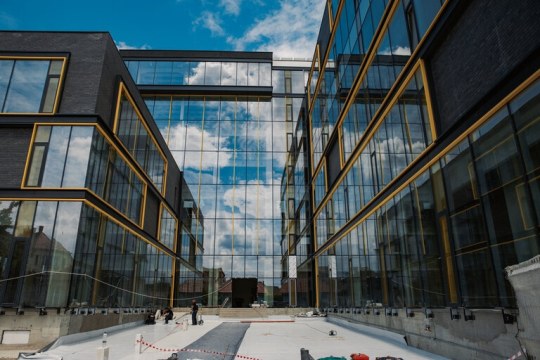
Who Are the Leading IT Companies in Coimbatore?
The city hosts several top IT companies, including Tata Consultancy Services (TCS), Cognizant, Wipro, and Robert Bosch, along with growing regional players like KGISL and Aspire Systems. These companies offer a variety of services from software development to business consulting and automation solutions. Working with such companies not only provides a chance to learn and grow but also adds credibility to one's career profile. Their well-established infrastructure and focus on training employees make them attractive employers in the region.
Best IT Companies in Coimbatore :
Coimbatore, one of Tamil Nadu's major industrial hubs, has seen significant growth in the IT sector. Known for its skilled workforce, affordable infrastructure, and a supportive business ecosystem, the city hosts many IT companies that offer a wide range of services from software development to digital transformation.
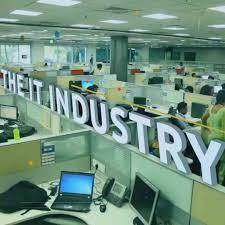
Here’s a look at some of the best IT company in Coimbatore :
Accenture :

Global consulting and technology services company providing full-fledged IT and business process services.
ThoughtWorks:

Leaders in software consultancy to get custom software developed through agile methodology and digital transformation
Payoda Technologies :

focuses primarily on aspects of digital transformation, analytics, cloud solution development and software development.
Sridhar Vembu Institute of Technology (Zoho Corp) :

It is based in Chennai; however, the innovation and research wing of Zoho is based in Coimbatore, where it works on software product development.
Softratech Info :
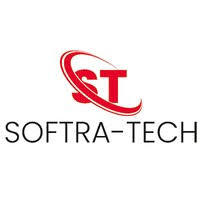
The company provides IT solutions, consultancy, software development, and support services.
Repute Network :

A technology-based company, focusing on digital payments, financial technologies, and blockchain solutions
Mindnotix Technologies :
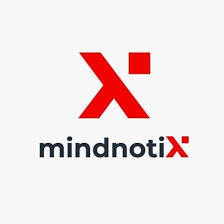
A technology firm, developing web and mobile applications as well as AR/VR-based applications, and AI-driven applications.
Kumaraguru College of Technology :

Technology Business Incubator (KCT-TBI) - Incubates start-ups and tech innovation in IoT, AI, robotics, and software solutions.
Revature India :

Trains and develops software services and products, focusing on creating technical talent for the global market.
i2i Software Solutions :

Offers end-to-end software solutions and IT services, with a focus on custom development.
eQuadriga Software Pvt Ltd :

is an IT services company focusing on software development, mobile apps, and digital marketing.
Conclusion :
Coimbatore’s IT sector is full of opportunities for freshers, thanks to a supportive ecosystem of companies and a growing tech community. From MNCs like Cognizant and Bosch to dynamic startups, IT companies in Coimbatore provides ample options for fresh graduates eager to kickstart their careers. With a focus on learning, networking, and skill development, freshers can build a promising career in this thriving city.
#it company#IT companies in Coimbatore#internship#freshers it job#jobseekers#jobs#employment#careers#workplace#inside job
2 notes
·
View notes
Text

Enhancing Tech Creativity with Interactive Media
Sandbox VR is an immersive virtual reality platform that can significantly enhance tech creativity through interactive experiences. Leveraging Sandbox VR involves creating engaging and interactive virtual environments that can inspire creativity in the tech industry.
Incorporating Sandbox VR for Enhanced Interactivity
Creating Immersive Environments: Sandbox VR allows tech creators to design and build immersive virtual environments that can serve as the backdrop for innovative tech solutions. For example, in a VR-based design and prototyping project, engineers and designers can utilize Sandbox VR to interact with and modify 3D models in a virtual space, fostering creativity and collaboration.
Collaborative Design and Development: Utilizing Sandbox VR enables teams to work together in a virtual space, fostering collaboration and creativity. For instance, software developers can use Sandbox VR to visualize and interact with code structures in a three-dimensional space, potentially leading to more innovative and efficient coding practices.
Customer Experience Enhancement: Tech industry professionals can leverage Sandbox VR to prototype and test customer experiences in a virtual environment. For instance, engineers and product designers can simulate user interactions with new technologies, enabling them to gather valuable insights and enhance creativity when designing user-friendly interfaces and products.
Utilizing Media Players Supporting XMLTV for Enhanced Content Integration
XMLTV is a popular format for exchanging TV listings and associated information. Leveraging an online m3u playlist editor can enhance creativity in the tech industry by enabling the seamless integration of diverse media content into tech solutions.
Dynamic Content Integration: Media players supporting the newest epg program guide can be utilized to integrate dynamic TV listings and program information into tech solutions. For example, developers can create innovative applications that leverage XMLTV data to provide users with personalized TV schedules and recommendations, enhancing creativity in the entertainment technology sector.
Data-Driven Creativity: By incorporating the latest electronic program guide online or XMLTV-supported media players, tech professionals can harness TV listing data to inspire creativity in content discovery and recommendation systems. For instance, engineers can develop algorithms that analyze xmltv data to suggest tailored content, potentially leading to more personalized and innovative media consumption experiences.
Multifaceted Application Development: XMLTV integration through compatible media players can empower tech creators to build multifaceted applications that combine TV listings with other data sources. For instance, developers can merge xmltv information with user preferences and social media data to create novel and engaging media consumption platforms, fostering creativity in the tech industry.
In conclusion, leveraging Sandbox VR and media players supporting XMLTV can significantly enhance tech creativity by enabling the creation of immersive environments, fostering collaboration, and integrating dynamic media content. These technologies offer vast potential for inspiring innovative solutions and experiences in the ever-evolving tech industry.
vimeo
7 notes
·
View notes
Text
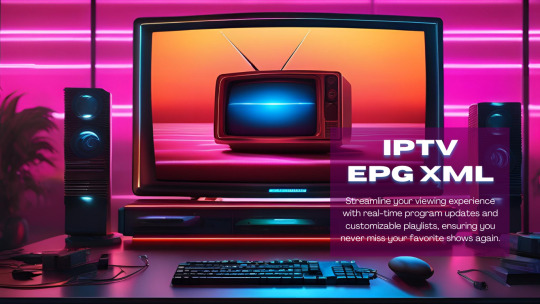
Tools and Methods for Extracting Metaverse VR Using XMLTV EPG Grabber
Metaverse VR has become an increasingly popular and immersive way for people to interact and engage with digital environments.
One of the key aspects of the Metaverse VR experience is the ability to access Electronic Program Guide (EPG) data to discover and schedule virtual events, shows, and activities.
In this blog post, we'll explore various tools and methods available for extracting Metaverse VR data using epg grabber.
What is XMLTV EPG Grabber?
XMLTV is a set of programs to process TV (tvguide) listings and help manage your TV viewing, recording, and scheduling. XMLTV EPG grabber is a tool specifically designed to extract EPG data from various sources and provide a standardized XML format for TV listings.
This format can be utilized to populate electronic program guides in various applications, including those for Metaverse VR experiences.
Tools for Extracting Metaverse VR Using XMLTV EPG Grabber
1. XMLTV GUI Grabber
XMLTV GUI Grabber is a user-friendly graphical interface tool that allows users to easily configure and run XMLTV grabbers. It provides a simple way to select sources, set up grabber options, and initiate the extraction process. This tool is suitable for users who prefer a more intuitive and visually guided approach to EPG data extraction.
2. Web-based XMLTV Grabbers
There are several web-based services and tools that offer XMLTV EPG grabber functionality. These platforms typically allow users to input their desired sources and parameters, and then generate XMLTV-compatible output for consumption in Metaverse VR applications.
Web-based grabbers are accessible from any device with an internet connection, making them convenient for users who require flexibility in their data extraction process.
3. Custom Scripting and Automation
For users with specific requirements or unique sources for Metaverse VR EPG data, custom scripting and automation can be employed to extract and format the XMLTV data. This method involves writing custom scripts or utilizing automation tools to retrieve and process EPG data from different sources, providing a high degree of customization and flexibility.
Methods for Utilizing Extracted EPG Data in Metaverse VR
Once the EPG data has been extracted using XMLTV grabbers, there are several methods for utilizing this data within the Metaverse VR environment:
Integration with Virtual Event Scheduling: EPG data can be integrated into virtual event scheduling systems within the Metaverse VR, allowing users to discover and RSVP to upcoming virtual events and experiences.
Customized Virtual TV Guide: The extracted EPG data can be used to create a customized virtual TV guide within the Metaverse VR, enabling users to browse and select virtual shows and broadcasts to attend.
Personalized Notifications and Reminders: Utilizing the extracted EPG data, personalized notifications and reminders can be sent to users within the Metaverse VR to ensure they don't miss out on their favorite virtual events or activities.
XMLTV EPG grabbers provide a valuable means of extracting xmltv epg format for use within the Metaverse VR. Whether through user-friendly graphical interfaces, web-based services, or custom scripting, these tools and methods empower users to enrich their virtual experiences with relevant and up-to-date content.
By leveraging the extracted EPG data, developers and content creators can enhance the richness and interactivity of the Metaverse VR environment, offering users a more immersive and engaging virtual experience.
Developing Mixed Reality Applications with XMLTV Data
Mixed Reality (MR) applications have been gaining traction in recent years, revolutionizing the way we interact with our digital environment. A key factor in the improvement of XMLTV data for parsing and presentation. This comprehensive guide will introduce you to the world of XMLTV data parsing and the role it plays in the development of MR applications. We'll also delve into open-source tools and scripts that can enhance your MR development experience.
Understanding XMLTV in the Context of Mixed Reality
XMLTV is a standard that is primarily used for the interchange of TV program schedule information. However, its versatile nature allows it to be adapted for use in the development of MR applications.
XMLTV Data Parsing
XMLTV data parsing is a method of extracting useful information from XMLTV feeds. This data can be used to populate the EPG (Electronic Program Guide) of a MR application, providing users with information on available programs.
Metaverse on XMLTV technology
The metaverse, a collective virtual shared space created by the convergence of physical and virtual reality, can benefit from the use of XMLTV technology. XMLTV data can be used to create a more immersive and interactive experience for users in the metaverse.
Integrating VR CGI and XMLTV
Virtual Reality (VR) Computer Generated Imagery (CGI) can be integrated with XMLTV data to create more realistic and engaging MR experiences. This integration can also enhance the user's sense of presence in the MR environment.
Open-Source Tools and Scripts for XMLTV Data Parsing
There are numerous open-source tools and scripts available for XMLTV data parsing. These tools help developers to parse, manipulate, and present XMLTV data in their MR applications.
TVHeadEnd
TVHeadEnd is an open-source TV streaming server and recorder that supports XMLTV data. It can parse and save XMLTV data into the EPG database, providing a crucial function for MR applications.
M3U
M3U is a simple text format that can be used to create playlists and organize XMLTV data. It can be used in conjunction with XMLTV data to create a more structured and user-friendly EPG.
XPath
XPath is a language that is used to navigate through elements and attributes in XML documents. It can be used to identify specific nodes or attributes in xmltv descriptions that contain useful EPG information.
StereoKit
StereoKit is an open-source mixed reality library for building HoloLens, VR, and desktop experiences. It can be used to create cross-platform MR experiences with C# and OpenXR.
Building Interactive Mixed Reality Interfaces in XMLTV Data Parsing and Presentation
Building interactive MR interfaces using XMLTV data parsing and presentation involves several steps. These include setting up your development environment, parsing the XMLTV data, creating the MR interface, and testing the application.
Setting Up Your Development Environment
Before you can start developing your MR application, you need to set up your development environment. This typically involves installing the necessary software and hardware, such as a MR headset, a development IDE, and the necessary SDKs.
Parsing XMLTV Data
Once your development environment is set up, you can start parsing the XMLTV data. This involves extracting useful information from the XMLTV feed and saving it into your application's EPG database.
Creating the MR Interface
After parsing the XMLTV data, you can start creating the MR interface. This involves designing and implementing the user interface elements, such as menus, controls, and displays.
Testing the Application
Once the MR interface is complete, you can start testing your application. This involves checking the functionality of the application and ensuring that the XMLTV data is correctly parsed and presented.
Developing mixed reality applications using XMLTV data involves a combination of data parsing, interface design, and application testing. By understanding the role of XMLTV data in MR development and utilizing the available open-source tools and scripts, you can create engaging and interactive MR applications. So, dive into the world of XMLTV and explore how it can enhance your MR development experience.
youtube
3 notes
·
View notes
Text

Open-source Tools and Scripts for XMLTV Data
XMLTV is a popular format for storing TV listings. It is widely used by media centers, TV guide providers, and software applications to display program schedules. Open-source tools and scripts play a vital role in managing and manipulating XMLTV data, offering flexibility and customization options for users.
In this blog post, we will explore some of the prominent open-source tools and scripts available for working with xmltv examples.
What is XMLTV?
XMLTV is a set of software tools that helps to manage TV listings stored in the XML format. It provides a standard way to describe TV schedules, allowing for easy integration with various applications and services. XMLTV files contain information about program start times, end times, titles, descriptions, and other relevant metadata.
Open-source Tools and Scripts for XMLTV Data
1. EPG Best
EPG Best is an open-source project that provides a set of utilities to obtain, manipulate, and display TV listings. It includes tools for grabbing listings from various sources, customizing the data, and exporting it in different formats. Epg Best offers a flexible and extensible framework for managing XMLTV data.
2. TVHeadend
TVHeadend is an open-source TV streaming server and digital video recorder for Linux. It supports various TV tuner hardware and provides a web interface for managing TV listings. TVHeadend includes built-in support for importing and processing XMLTV data, making it a powerful tool for organizing and streaming TV content.
3. WebGrab+Plus
WebGrab+Plus is a popular open-source tool for grabbing electronic program guide (EPG) data from websites and converting it into XMLTV format. It supports a wide range of sources and provides extensive customization options for configuring channel mappings and data extraction rules. WebGrab+Plus is widely used in conjunction with media center software and IPTV platforms.
4. XMLTV-Perl
XMLTV-Perl is a collection of Perl modules and scripts for processing XMLTV data. It provides a rich set of APIs for parsing, manipulating, and generating XMLTV files. XMLTV-Perl is particularly useful for developers and system administrators who need to work with XMLTV data in their Perl applications or scripts.
5. XMLTV GUI
XMLTV GUI is an open-source graphical user interface for configuring and managing XMLTV grabbers. It simplifies the process of setting up grabber configurations, scheduling updates, and viewing the retrieved TV listings.
XMLTV GUI is a user-friendly tool for users who prefer a visual interface for interacting with XMLTV data.
Open-source tools and scripts for XMLTV data offer a wealth of options for managing and utilizing TV listings in XML format. Whether you are a media enthusiast, a system administrator, or a developer, these tools provide the flexibility and customization needed to work with TV schedules effectively.
By leveraging open-source solutions, users can integrate XMLTV data into their applications, media centers, and services with ease.
Stay tuned with us for more insights into open-source technologies and their applications!

Step-by-Step XMLTV Configuration for Extended Reality
Extended reality (XR) has become an increasingly popular technology, encompassing virtual reality (VR), augmented reality (AR), and mixed reality (MR).
One of the key components of creating immersive XR experiences is the use of XMLTV data for integrating live TV listings and scheduling information into XR applications. In this blog post, we will provide a step-by-step guide to configuring XMLTV for extended reality applications.
What is XMLTV?
XMLTV is a set of utilities and libraries for managing TV listings stored in the XML format. It provides a standardized format for TV scheduling information, including program start times, end times, titles, descriptions, and more. This data can be used to populate electronic program guides (EPGs) and other TV-related applications.
Why Use XMLTV for XR?
Integrating XMLTV data into XR applications allows developers to create immersive experiences that incorporate live TV scheduling information. Whether it's displaying real-time TV listings within a virtual environment or overlaying TV show schedules onto the real world in AR, XMLTV can enrich XR experiences by providing users with up-to-date programming information.
Step-by-Step XMLTV Configuration for XR
Step 1: Obtain XMLTV Data
The first step in configuring XMLTV for XR is to obtain the XMLTV data source. There are several sources for XMLTV data, including commercial providers and open-source projects. Choose a reliable source that provides the TV listings and scheduling information relevant to your target audience and region.
Step 2: Install XMLTV Utilities
Once you have obtained the XMLTV data, you will need to install the XMLTV utilities on your development environment. XMLTV provides a set of command-line tools for processing and manipulating TV listings in XML format. These tools will be essential for parsing the XMLTV data and preparing it for integration into your XR application.
Step 3: Parse XMLTV Data
Use the XMLTV utilities to parse the XMLTV data and extract the relevant scheduling information that you want to display in your XR application. This may involve filtering the data based on specific channels, dates, or genres to tailor the TV listings to the needs of your XR experience.
Step 4: Integrate XMLTV Data into XR Application
With the parsed XMLTV data in hand, you can now integrate it into your XR application. Depending on the XR platform you are developing for (e.g., VR headsets, AR glasses), you will need to leverage the platform's development tools and APIs to display the TV listings within the XR environment.
Step 5: Update XMLTV Data
Finally, it's crucial to regularly update the XMLTV data in your XR application to ensure that the TV listings remain current and accurate. Set up a process for fetching and refreshing the XMLTV data at regular intervals to reflect any changes in the TV schedule.
Incorporating XMLTV data into extended reality applications can significantly enhance the immersive and interactive nature of XR experiences. By following the step-by-step guide outlined in this blog post, developers can seamlessly configure XMLTV for XR and create compelling XR applications that seamlessly integrate live TV scheduling information.
Stay tuned for more XR development tips and tutorials!
Visit our xmltv information blog and discover how these advancements are shaping the IPTV landscape and what they mean for viewers and content creators alike. Get ready to understand the exciting innovations that are just around the corner.
youtube
4 notes
·
View notes
Text
What is the future of Metaverse in Online Gaming Industry

As we enter a new digital era, the concept of the Metaverse is becoming a cornerstone of innovation within the online gaming industry. Nearly hundreds of millions of virtual reality products are expected to be in use in the next 5 years and almost 154 were counted in the first quarter of this year. Let's explore the future of the Metaverse and highlight software company's groundbreaking contributions to this dynamic landscape.
What is Metaverse in the gaming industry?
A virtual universe where players can engage, create, and socialize, the Metaverse offers limitless possibilities for both gamers and developers. Many companies contribute to this evolution, one among them is BSEtec - A leading blockchain software development company whose vision and technology are shaping the future of online gaming.
Is it a New Era of Digital Interaction? Yes, The Metaverse makes digital interactions which promises to redefine how players interact with digital worlds and one another. Through virtual reality (VR), augmented reality (AR), and artificial intelligence (AI), the gaming experience is becoming more immersive and interconnected than ever before recognize the importance of these technologies in creating a vibrant Metaverse, committing itself to harnessing these advancements to enhance user experience.
How does BSEtec make its technological Innovation?
BSEtec is at the forefront of integrating advanced technologies into the gaming experience. has built applications using VR and AR, and they have been customized when required to create environments that feel alive and interactive. Players can expect stunning graphics, realistic physics, and seamless experiences that blur the lines between reality and digital existence.
The future of the Metaverse will likely see an increased focus on interconnectivity between different games and platforms. The player will be able to traverse various games and worlds seamlessly. This cross-platform functionality will allow characters, assets, and achievements to be used across multiple games, creating a cohesive ecosystem that enhances player engagement and retention which can be developed as a web and mobile app.
Enhancing Social Interactions is a central pillar of the Metaverse. aims to improve this aspect by developing social gaming platforms facilitating seamless communication and collaboration among players. Enabling dynamic in-game interactions and fostering communal events, ensures that social experiences are rich and meaningful. Gamers will not only connect with friends but also forge monetization with ad-mob as well as onboarding into many influencers as entrepreneurs, which in other terms as Play-to-Earn Models invokes Economic Opportunities.
BSEtec is actively exploring the integration of cryptocurrency and non-fungible tokens (NFTs) into its gaming platforms namely mint trades, allowing players to earn real-world value from their in-game activities. This transition enables a new economic framework within the Metaverse, incentivizing players to engage, compete, and collaborate. Overall, The future of the Metaverse in the online gaming industry is bright and filled with exhilarating possibilities that will redefine how we play, connect, and create. BSEtec as one of the leading companies looks up a charge in this transformative journey, contributing innovative technologies, getting connected with their blockchain engineers, and embracing Metaverse, it can look forward to an enriched gaming experience that transcends boundaries and brings players together like never before.
2 notes
·
View notes
Text
Globally, the fields of augmented reality (AR) and virtual reality (VR) have experienced explosive growth, with India emerging as a major participant in this technological revolution. The need for augmented reality (AR) and virtual reality (VR) solutions is rising quickly as businesses all over the nation become aware of these technologies' revolutionary potential. At the vanguard of this shift are businesses like Simulanis Solutions, who are advancing innovation and offering cutting-edge AR and VR services to a range of industries.
#AR and VR Companies in India#Augmented Reality Solutions India#Virtual Reality Companies India#AR/VR Development India#AR/VR Solutions Provider India#AR and VR Technologies India#AR and VR Application Development India#AR and VR Training Solutions India#Immersive Technologies India#AR/VR for Business India#AR and VR Startups India#Custom AR and VR Solutions India#AR/VR for Healthcare India#AR/VR for Education India#Virtual Reality Experiences India#AR and VR Game Development India#AR/VR in Retail India#Enterprise AR/VR Solutions India#AR and VR Marketing India#Interactive AR/VR Experiences India
0 notes
Text
Advantal Technologies - Web Development Company
Advantal Technologies is a software solutions company known for empowering businesses with innovative technological solutions to become market leaders. We offer custom software solutions, enterprise mobility solutions, UI/UX designing, IT Consulting, project management, manpower outsourcing, mobile application development and secure communication products. For inquiries, please send us an email at [email protected] For more info, please visit www.advantaltechnologies.com
youtube
#ar vr app development#blockchain app development#cloud application development#custom software development company#app development company#mobile app developer#best app development software#healthcare app developers#software development company#iot developers#largest app developers#internet of things app development#app building agency#coding#devlog#artificial intelligence#html#machine learning#programming#python#linux#Youtube
1 note
·
View note
Text
How Educators Can Use Generative AI to Promote Student Innovation

In the ever-evolving landscape of education, technology continues to play a pivotal role in shaping how students learn and innovate. One of the most promising advancements in recent years is the advent of Generative AI, a technology that has the potential to revolutionize the classroom and foster unprecedented levels of creativity and innovation among students.
Understanding Generative AI
Generative AI refers to a subset of artificial intelligence that can generate new content, such as text, images, music, and even entire virtual environments. Unlike traditional AI, which follows pre-defined rules and algorithms, Generative AI can learn from data and create original outputs, making it a powerful tool for educators looking to inspire and engage their students.
Transforming Education with Generative AI
Enhancing Creativity and Innovation Generative AI provides students with a platform to explore their creativity in ways that were previously unimaginable. By leveraging AI-driven tools, students can experiment with various forms of art, music, and literature, pushing the boundaries of their imagination. For instance, students can use AI to compose music, create digital artwork, or write stories, allowing them to express their ideas uniquely and innovatively.
Personalized Learning Experiences One of the significant advantages of Generative AI in education is its ability to tailor learning experiences to individual students' needs. AI can analyze students' learning patterns and preferences, enabling educators to create personalized learning plans that cater to each student's strengths and weaknesses. This level of customization ensures that students remain engaged and motivated, ultimately leading to better learning outcomes.
Interactive and Immersive Learning Environments Generative AI can create interactive and immersive learning environments that captivate students' attention and enhance their understanding of complex concepts. For example, AI-generated virtual reality (VR) environments can transport students to historical events, scientific phenomena, or even fictional worlds, providing them with a hands-on learning experience that goes beyond traditional textbooks.
Encouraging Collaboration and Critical Thinking Generative AI can facilitate collaborative projects where students work together to solve problems and create content. By simulating real-world scenarios and challenges, AI tools encourage students to think critically, communicate effectively, and collaborate with their peers. This collaborative approach not only enhances their problem-solving skills but also prepares them for future careers where teamwork and innovation are essential.
Implementing Generative AI in the Classroom
Incorporating AI Tools in the Curriculum To harness the full potential of Generative AI, educators should integrate AI tools into their curriculum. This could involve using AI-driven software for creative projects, implementing AI-based assessments, or utilizing AI to provide personalized feedback to students. By embedding AI into everyday learning activities, educators can create a dynamic and engaging learning environment.
Training Educators and Students Effective implementation of Generative AI requires both educators and students to be proficient in using AI tools. Schools should invest in professional development programs to train teachers on the latest AI technologies and their applications in the classroom. Additionally, students should be provided with opportunities to learn and experiment with AI tools, fostering a culture of innovation and continuous learning.
Ensuring Ethical and Responsible Use While Generative AI offers numerous benefits, it is crucial to ensure its ethical and responsible use in education. Educators must teach students about the ethical implications of AI, including issues related to data privacy, bias, and the responsible use of AI-generated content. By promoting ethical AI practices, educators can help students become responsible digital citizens.
Conclusion
Generative AI is poised to transform education by promoting creativity, personalization, and collaboration among students. By integrating this cutting-edge technology into the classroom, educators can inspire a new generation of innovators and problem solvers. As we continue to explore the potential of Generative AI, it is essential to focus on its ethical and responsible use, ensuring that technology serves as a tool for positive change in education.
Incorporating Generative AI into educational practices not only enhances the learning experience but also prepares students for a future where technology and innovation play a central role. As educators, embracing Generative AI can unlock a world of possibilities, empowering students to achieve their full potential and drive the next wave of technological advancements.
2 notes
·
View notes
Text
Difference Between Augmented Realtiy And Virutal Reality Comparing Two Revolutionary Technologies
Difference Between Augmented Reality (AR) and Virtual Reality (VR) are awesome immersive technologies that have captured the creativity of both the generation industry and clients. Though they proportion similarities in their capacity to modify how we perceive and interact with the sector, AR and VR are basically exceptional in their technique and use cases. This essay explores the center variations between AR and VR, focusing on their definitions, technological mechanisms, hardware necessities, person interplay, use cases, and destiny ability.

Definitions and Core Concepts
AR complements the person's notion of reality by way of including digital elements that interact with the physical environment. The key concept in the back of AR isn't always to replace the physical international but to enhance it, imparting a blend of virtual and actual-world experiences. Examples of AR can be visible in phone applications like Pokémon Go, wherein users can see digital creatures within the actual international through their smartphone cameras, or Snapchat filters, wherein virtual outcomes are applied to human faces.
Virtual Reality (VR), on the other hand, creates entirely immersive digital surroundings that replace the actual international. When the use of VR, customers are transported into a totally laptop-generated international that may simulate real-world environments or create entirely fantastical landscapes. This virtual environment is commonly experienced through VR headsets, which include the Oculus Rift or PlayStation VR, which block out external visual input and offer 360-diploma visuals of the virtual space. The number one purpose of VR is to immerse users so absolutely in a virtual environment that the distinction between the digital and actual worlds temporarily dissolves.
Technological Mechanisms
AR and VR rent distinct technological mechanisms to acquire their respective experiences. In Augmented Reality, the primary mission is to combine the actual international with digital elements in a manner that feels seamless and natural. This requires tracking the user’s function and orientation in the actual global, which is generally executed through the use of cameras, sensors, and accelerometers in smartphones or AR glasses. The AR software procedures the visual entry from the digital camera and superimposes virtual objects into the proper function in the actual international scene. The gadget also needs to make sure that these objects interact with real-world factors in plausible ways, such as having a virtual ball soar off an actual table or aligning a digital map on the floor. Real-time processing is important to keep the illusion that digital factors are a part of the actual world.
In contrast, Virtual Reality includes developing a totally immersive virtual global that absolutely replaces the user's actual-international surroundings. The VR device desires to render a three-D environment in real-time, imparting unique views because the person's actions their head or body. This is generally performed with the use of state-of-the-art image engines and powerful processors, which simulate lighting fixtures, textures, and physics to make the digital world as realistic as feasible. A VR headset affords stereoscopic shows (one for every eye) to provide the phantasm of depth, and movement-tracking sensors ensure that the user’s actions—including looking around or walking—are meditated appropriately within the virtual international. VR requires excessive constancy in visuals and coffee latency to save you from movement sickness and hold a sense of presence within the virtual international.
Hardware Requirements
The hardware necessities for AR and VR additionally differ notably. For AR, the hardware can be enormously minimal. Since AR overlays digital statistics onto the real world, devices like smartphones or drugs with built-in cameras and GPS capabilities are regularly enough for fundamental AR packages. More superior AR reviews and those related to 3-D holograms or complex interactions may require specialized AR headsets like Microsoft HoloLens or Magic Leap, with additional sensors for depth belief and environmental mapping.
In VR, the hardware setup is typically more concerned. In the middle of any VR reveal in is a headset, which provides the necessary presentations and motion tracking to create an immersive environment. High-give-up VR systems, such as those for gaming or expert simulations, may also require outside sensors, hand controllers, and occasionally even treadmills or haptic remarks devices to simulate physical movement and touch in the virtual global. The computing strength required to run VR applications is also drastically higher than AR, often demanding powerful portraits playing cards, and processors to render the three-D environments in real-time.
User Interaction
User interplay is another place wherein AR and VR vary extensively. In AR, user interaction typically occurs inside the real international, with digital elements appearing as extensions or improvements of actual-world gadgets. For example, a person may interact with a digital man or woman in AR by moving their phone around or the usage of hand gestures to control virtual gadgets. The interaction is often context-sensitive, relying on the person’s bodily surroundings as part of the experience. AR is regularly extra informal and reachable because it may be experienced with everyday gadgets like smartphones. In VR, the interaction is fully immersive and takes vicinity in the digital global. Users can interact with the digital surroundings with the use of specialized controllers or, in some instances, hand-monitoring sensors that map the person’s actions into the virtual space. For instance, in a VR game, the user might physically swing their arms to wield a sword or pass their frame to stay away from an attack. VR interplay tends to be extra excessive and calls for a higher degree of engagement for the reason that user is absolutely enveloped inside the digital surroundings. Use Cases
The use instances for AR and VR additionally highlight their fundamental variations. In industries like retail, AR allows customers to peer how products, along with furniture or clothing, could look of their very own houses or on their bodies before making a buy. AR is also famous in schooling and education, in which it is able to provide actual-time information or visible aids in a bodily surrounding. For instance, clinical students would possibly use AR to visualize a virtual anatomy overlay on a real human frame, improving their mastering experience.
VR, alternatively, is right for applications that require general immersion. In gaming, VR permits gamers to enjoy a heightened experience of presence in fantastical worlds, together with flying via area or preventing dragons. In schooling and simulation, VR is used in fields like aviation and the army, in which practical virtual environments can simulate excessive-threat eventualities without placing the user in actual threat. VR is also gaining traction in fields like structure and design, in which it lets designers and clients discover virtual fashions of homes and areas before they are constructed. Future Potential
The destiny capability of AR and VR is extensive, although each technology is in all likelihood to conform in distinct directions. AR is anticipated to end up extra pervasive as cell devices and wearables emerge as superior. The development of lightweight, low-priced AR glasses may want to make it a ubiquitous tool for ordinary obligations, together with navigation, communique, and data retrieval. AR may also revolutionize fields like healthcare, production, and logistics by supplying people with actual-time facts and guidance overlaid on their physical surroundings. VR is likely to persist increase in regions that advantage of immersive reports, such as leisure, training, and far-off collaboration. As VR headsets emerge as lower priced and wireless, the barriers to huge adoption may lessen, making VR a not unusual tool for each expert and personal use. In a long time, the traces between AR and VR may blur as combined truth (MR) technologies—inclusive of the ones being advanced with the aid of corporations like Meta (previously Facebook) and Microsoft—combine factors of both.

Conclusion
While AR and VR both provide immersive reports that adjust the way we perceive the sector, they do so in fundamentally one-of-a-kind approaches. AR enhances our interplay with the actual international by way of overlaying virtual content, whilst VR creates totally new virtual environments that update the real global. Their variations in technology, hardware, interplay, and use instances reflect the unique strengths of every, making them ideal for different applications. Both AR and VR hold extensive potential for the destiny, promising to reshape industries and ordinary lifestyles in ways we're simply beginning to discover.
2 notes
·
View notes
Text
Best Web Design and Hosting for Small Business 2024
Small organizations might take the following crucial actions to guarantee that they have the best web design and hosting for small business 2024:
Make User Experience (UX) a priority : To create dynamic, engaging experiences, include the newest UX-focused web design trends, such as scrolling animations, micro-interactions, and micro-animations.
Make sure the material on your website is easy to read, has a clean, minimalist style with lots of white space, and is navigable. Make sure your website is responsive and mobile-friendly to ensure a consistent user experience on all devices.
Use State-of-the-Art Technologies : To improve the user experience, consider including cutting-edge technologies like interactive 3D models, voice-activated interfaces, and augmented reality (AR). Create websites that are personalized, adaptive, and responsive to the unique interests and behaviors of each user by leveraging AI and machine learning. Use interactive narrative and gamification components to increase interest and promote exploration.
Website Objectives: Clearly state what the main goal of your website is. Do you want to create leads, sell goods online, or promote your services? Who is the target audience that you are attempting to reach? Your website's functionality and appearance are influenced by your understanding of your target client. material Strategy: Do you already have material on your website, or do you need assistance writing effective copy? Technical Proficiency: Do you require continuous assistance, or are you able to handle website updates on your own? Financial Restraints: Regarding what you can afford, be reasonable. The price of web design and hosting varies greatly based on features and complexity.
Working together yields the greatest online design and hosting option. Select a business that puts your business objectives first, communicates clearly, and pays attention to your needs. By taking these actions and making an investment in a well-designed and well-hosted website, you can create a solid online presence and set yourself up for success in 2024's rapidly changing digital environment.
Websites with responsive and adaptive design guarantee the best possible viewing experience on all kinds of devices.
Benefits :
Makes ensuring that different devices and screen sizes are compatible. Enhanced User Experience: Offers a consistent experience on PCs, tablets, and smartphones. Benefits of SEO: Search engines appreciate mobile-friendly design, which raises SEO rankings.
Adoption of speech-activated interfaces and voice search capabilities: Best Web Developer in Indore are implementing voice user interfaces (VUI) in response to the growing popularity of voice-enabled devices in order to offer a more user-friendly and convenient experience.
Virtual reality (VR) and augmented reality (AR) features integration: Indore web developers are utilizing these technologies to create immersive experiences and increase user engagement, especially for e-commerce companies.
Application of AI-powered tools and personalization: Top Indore web development companies are using AI to design websites that are adaptive and can be customized to the tastes of individual users. Examples of these tools include heatmaps, content generators, and website builders.

#Best Web Design and Hosting for Small Business 2024#website#website design#best website designing company in indore#web design#web development#seo services#digital marketing#web design company#web designing and development services in indore
2 notes
·
View notes